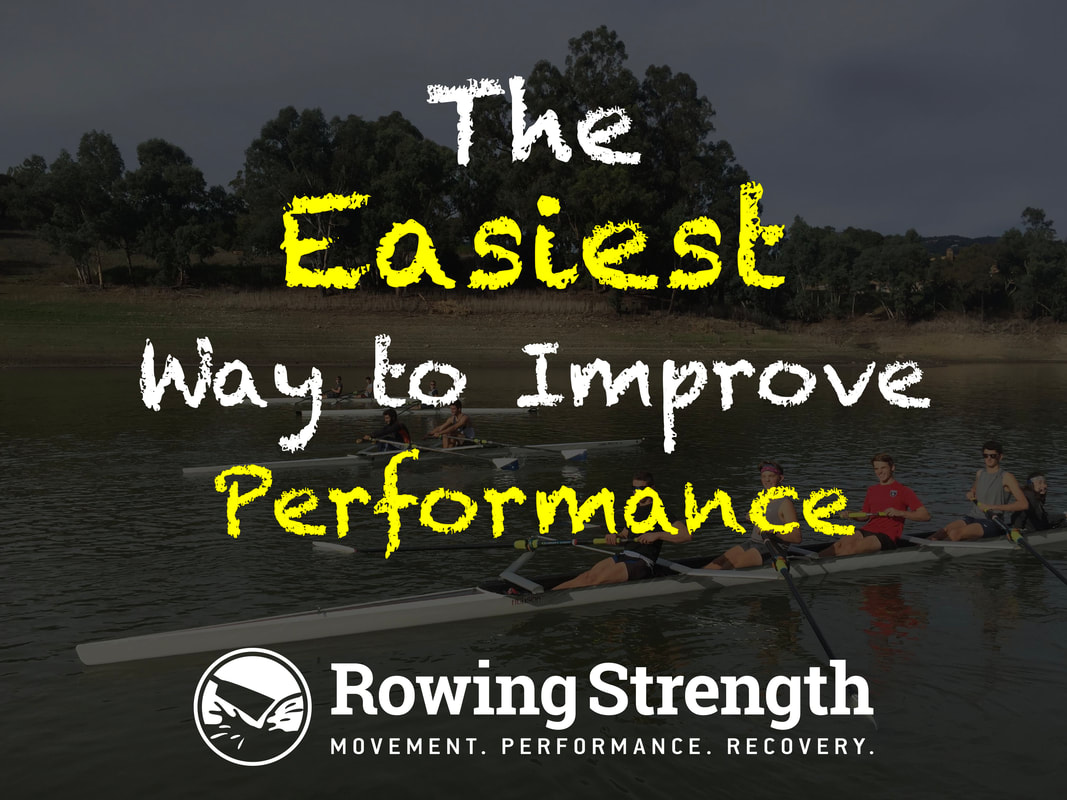|
As human beings we are meant to move freely and effortlessly. However, as we have evolved our daily tasks have become automated and less and less movement has been required from us. Most of our athletes sit all day in class and then head to practice and continue to sit in a boat. For this reason as well as others, our movement has been altered. If proper human movement isn’t addressed we will develop movement limitations. Movement limitations act as roadblocks or emergency brakes. They slow us down and cause unnecessary wear and tear. With clean movement, we find ourselves in an optimally aligned position which produces the most amount of force with the least amount of effort. From our experience we have found that those athletes with the fewest movement limitations tend to have the opportunity to be the best technical rowers. They respond to technical changes effortlessly. On the flip-side, you know those rowers who never seem to make a change? They’re trying, trust me. They want to make a change but they’re hitting a roadblock. Clear up their movement and you’ll see a change. Is your movement clean? What’s holding you back? Do any of your athletes have trouble making a technical change?
0 Comments
Rowers are really good at putting in the time and effort. What rowers often miss, is the fact that you not only have to outwork your opponents, you have to outsmart, and out-recover them as well. Train hard, but make sure your body is ready for it. Train hard, but avoid pushing yourself beyond what you can recover from. Athletes, are you training harder than usual? Place extra focus on your movement quality & recovery, this will allow you to handle more training stress. Coaches, are your athletes run down and under-performing? Are they stressed out from school or some other outside stressors? Giving them the day off may be your best option. The simple truth is that staying healthy is the easiest way to improve performance. The rowers who can perform at the most practices have more opportunities to improve. The rowers who have to take weeks off at a time, suffer. Do what you can to keep yourself/your athletes healthy and you will see progress. More Quality Practice = Better Performance What are you doing to stay healthy and available for every single practice? What are you doing to keep your team healthy? Rule #1: Reduce injury potential No one can prevent injury. Injuries happen. It is possible however, to reduce the chance of an injury from ever occurring in the first place. As coaches, we need to accept that injuries that occur during our watch are partly our fault. This is especially important in a sport that only has three injury mechanisms, all of which are under our control. We should be looking to reduce injury potential during training, and during competition. Finding the right training program will keep your athletes healthy at practice, and make them more robust for competition. Rule #2: Improve Performance The other part of course, is to increase performance. Prioritize safe, progressive training, but make sure that it's effective. Think about the risk/benefit ratio and let it guide your decision making. Think, what is the minimal effective dose? How can I get my athletes as fast as possible in the least amount of time? How can I do so without hurting them? Anytime you can load someone less (with weight or volume) and still get the same benefit, the better. Do not confuse the term less, with lazy. This is not lazy, this is not easy. Sometimes doing less actually results in better performance. Do you put your athlete’s health first? Do you take responsibility for your own health? Although injury rates are high, fortunately, there are only 3 ways to get injured in rowing (excluding a freak accident or a serious crab). 1) Over-use or Under-recovery (training error) 2) Technical error 3) Movement Limitations Since rowing is a non-contact sport we have a lot of control over all 3 mechanisms listed above. Lucky for us, we don’t have to deal with contact injuries such as ACL tears and concussions that are so prominent in other sports. The only way you can truly keep a football player safe is by keeping him on the sideline. We, on the other hand, can reduce the chance of all injuries from ever even occurring in the first place. All we have to do is make injury reduction a priority. Over-use or Under-recovery is a training error. We did too much too soon, or we didn’t do enough to recover in time. We have control over this. Technical errors are our responsibility. There’s no reason to repeat a technical error under-load. We have control over this. Movement Limitations can be identified and cleared. We have control over this. Have you experienced a rowing injury? Does it fall into one of these categories? |
Author
Blake Gourley holds a Masters of Science in Sports Performance Training and has over 12+ years of experience working with rowers. Read more Categories
All
Archives
August 2023
|




 RSS Feed
RSS Feed